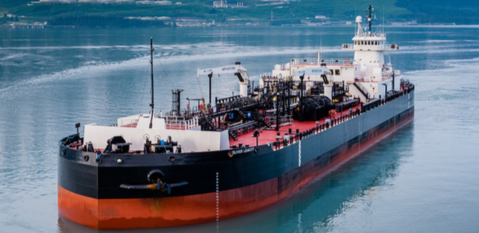In WorkBoat’s latest annual Construction Survey published during the 12-month period from October 2019 to October 2020, 54 tugs were contracted for, delivered, or were currently under construction. That number has grown since then.
“Our hope is that the next few years will see the implementation of the first remotely operated tugs and are continuing development of our RAmora series of designs and furthering discussions with owners and regulators,” said Mike Fitz- patrick, president and CEO, Robert Allan Ltd., Vancouver, British Columbia. “Given the unique configurations of each port, ship and environmental conditions we fully expect there to always be some level of human involvement in tug operations, even if 10-plus years from now that means the masters are performing docking maneuvers from the relative comfort and safety of a remote console at the port facility."
CONTINUOUS DEVELOPMENT
Tug designers, owners and operators focus on the here and now, while keeping one eye on tomorrow’s demands — autonomous vessel applications, full battery power, and more hybrid fuel operations.
“Our expectation is that in the coming years owners will further embrace green technologies to reduce environmental effects both above and below the waterline,” said Fitzpatrick. “Today’s newbuilds implement the latest exhaust emissions controls. Additionally, underwater radiated noise is also gaining higher importance to owners and ports reducing the impact the tugs have on the surrounding marine environment. Items such as hybrid propulsion systems or the use of large capacity energy storage batteries provide the opportunity to reduce the environmental footprint of the newest generation of tugs, and we are not only working with owners on new designs implementing these features, but also seeing them move forward with the actual construction.”
Tug companies are seeing requests for vessels that utilize existing technologies while having the flexibility to adapt for alternative fuels. “We have a number of concepts under development that utilize alternative fuels and hybrid technologies to meet customer requirements,” said Cole Van Gundy, director, commercial operations, Crowley Engineering Services. “Some level of automation will be included within many of our new vessel designs to augment the operators’ abilities.”
Containerships have been growing in recent years in order to handle additional containers aboard a single ship. This change has created challenges for harbor tug operators.
“Customers have indeed been asking for higher power, more compact tugs to handle the large, new 20,000-plus TEU containerships entering service and the U.S. ports undertaking major dredging projects,” said Fitzpatrick. “Five to 10 years ago, 70- to 80-ton tugs were thought of as very high power but increasingly have become the norm for many new tugs. As more tugs are performing indirect escort towing maneuvers to safely handle these larger ships at increased transit speeds, thankfully more of them are also being built to the latest escort towing safety standards.”
However, the TEU growth in containerships is a trend that may have seen its heyday for now.
“I don’t think you will see the tremendous leaps in TEU capacity over the next decade as compared with the large growth in capacity in the prior decade due to the physical and logistical limitations in U.S. ports,” said Porter Sesnon, general manager, ship assist and harbor escort services, Crowley Shipping. “You will likely see more powerful tugs in a smaller and smaller package. It is unlikely that we will see more tugs in the markets given cost and rate pressures and oversupply of tugs currently in the market.”
Continuous advances in technology can shorten the life expectancy of cell phones, televisions, and computers. What about today’s tugs?
“In some ways the technological advances could be viewed as shortening the economic life expectancy, but, in reality, we are having many conversations with owners about the operating costs of the new tugs 10-15 years after construction which didn’t previously occur,” said Fitzpatrick. “Considering these longer timeframes and higher maintenance costs is enabling some owners to justify the increased investment in items like hybrid propulsion and battery power that can then reduce the operating costs over the long term.”
Today, marine companies of all types and sizes have to deal with an enemy that wasn’t a real threat a few, short years ago — cybersecurity.
“Robert Allan Ltd. utilizes a continually monitored and robust IT system to address the global rise in cyberattacks,” said Fitzpatrick. “The benefits of some of the additional features we have implemented over the last few years though now also allow for almost instantaneous data retrieval from simultanious offsite storage on the cloud which helps guard against some of the more conventional threats such as fire, flooding or earthquakes.”
The future for tugs is brighter than ever with an ever-increasing focus on carbon reduction and sustainability, according to Paul Manzi, vice president, ship assist and escort, Crowley Shipping. “It is a segment of the maritime industry that is ripe with opportunity to apply alternate energy sources to supply power, whether it is electric supplied by batteries charged by shoreside utility company sources or dedicated microgrids powered by fuel cells or hydrogen (tailored to meet each location’s specific needs), LNG as direct fuel, or in hybrid configurations or bio-fuels. The smaller localized systems give great opportunity to provide a lower carbon footprint.”
Manzi said he expects efficiency and safety to continue to improve. “With the application of autonomous technology, there is an opportunity to manage operating costs more closely and provide a safer operation,” he said. “This can be achieved through use of cameras and sensors aiding in navigation, shoreside monitoring of engine performance and power supply, and improving dispatching efficiency through the use of artificial intelligence to predict movement patterns.”




